July 12, 2015
Martha O'Kennon

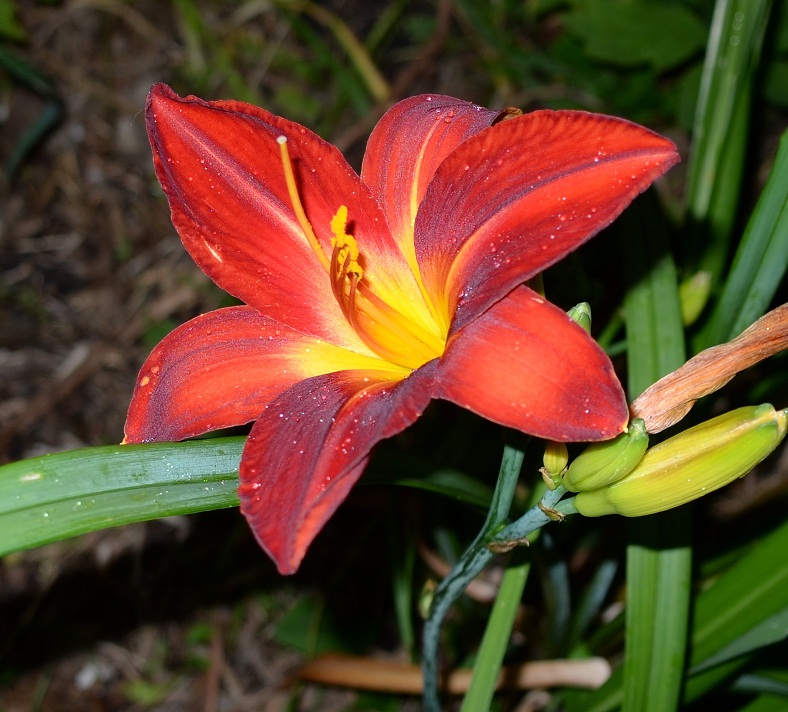
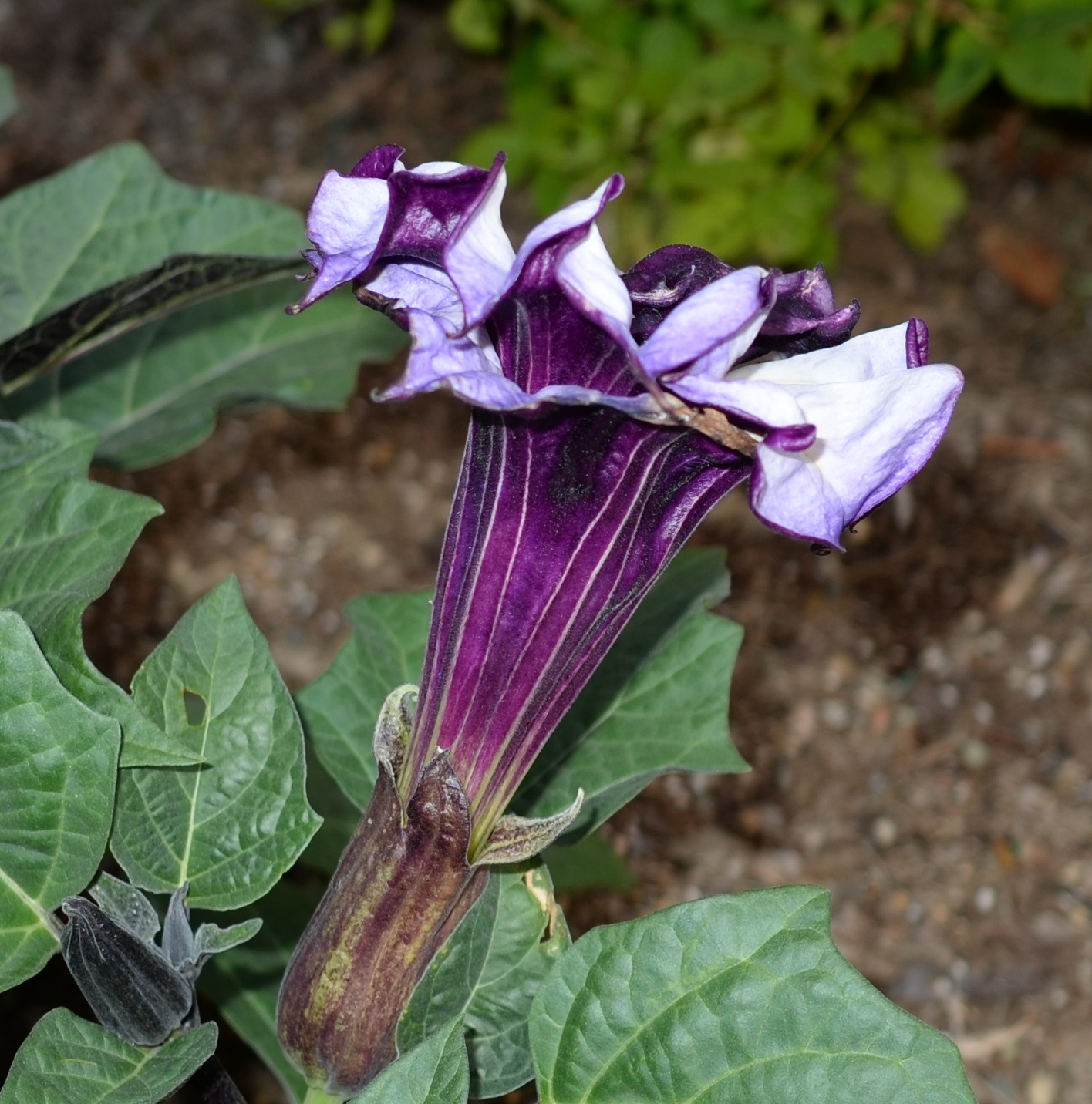
Flowers blooming here and there. That new deep magenta water lily is gone now but here you see it as it has aged. I think it is in some ways even
more beautiful than when it first opened up. A new day lily named Lusty Leland just started blooming. Of course the trumpet vine is in full bloom, but
to find one more gorgeous flower I walked down the street to where the college has planted a lovely flower garden. This purple beauty seems to be a flower
growing out of another flower. It might be a member of the datura family.
Remember that there is information in the name of the file for each image. You can see it by mousing over the image - look at the lower left of the screen.
Or you can click on the image to get to the (usually) larger image. Then the info is displayed in the address line above. If the image has been cropped
so that clicking on it doesn't result in a larger picture, you can always hit control plus at the same time to increase the size.
One of the most exciting things to happen in our neighborhood is the appearance of several tiny baby grey tree frogs. Counter to expectations, the
babies are the most vibrant bright green on top and so are almost completely camouflaged when they perch on a green plant. Since they are tree frogs,
they have no problem climbing up into plants to search for even smaller flies and other little things. My neighbor (about a block away) found two in his
lily collection. On the yellow lilies they are no longer camouflaged, but on my asters and raspberry leaves they disappear into the woodwork.
The first picture is courtesy of Jim Whitehouse - that's one of his lovely lilies. I'm sure the bluish color is an artifact of the light! The next two are mine on aster and raspberry respectively. The one on the aster was in shade so he is well camouflaged!
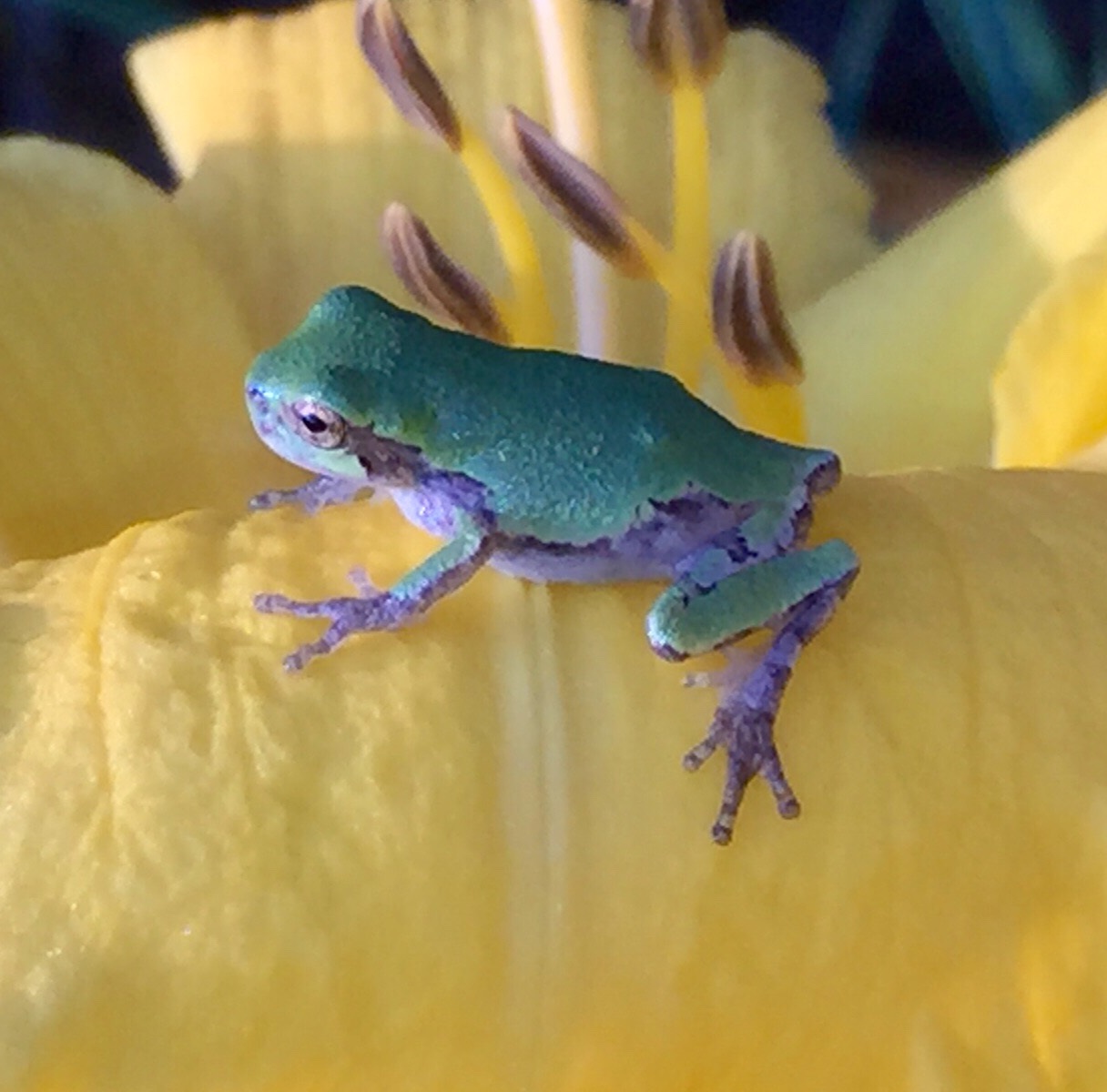
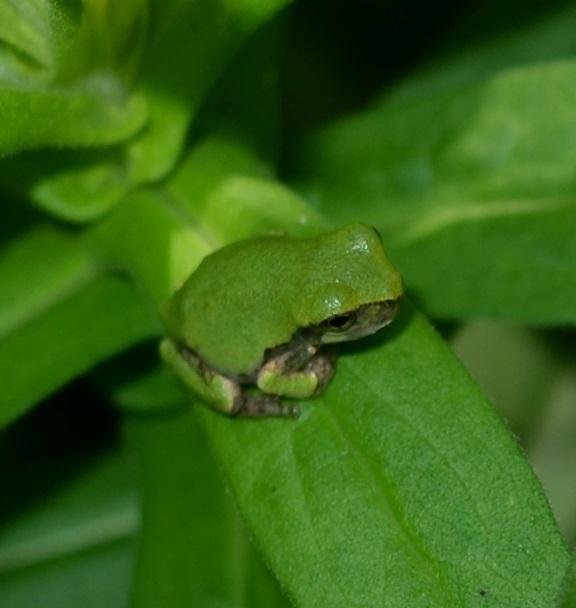
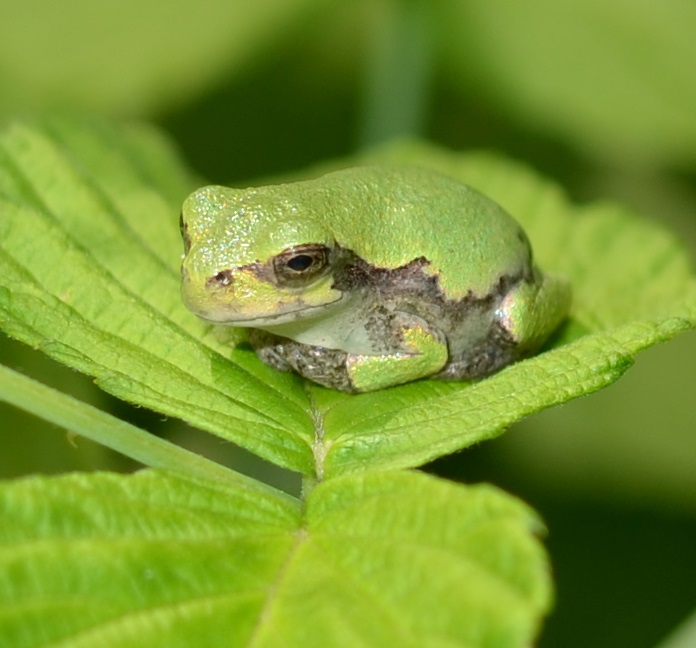
There are more butterflies around than in previous weeks. Some of the better places to look include the prairie garden attached to the College's
science center. That's where I saw this great spangled fritillary on a purple coneflower and a red admiral on another. The third picture is the same admiral with wings
folded.
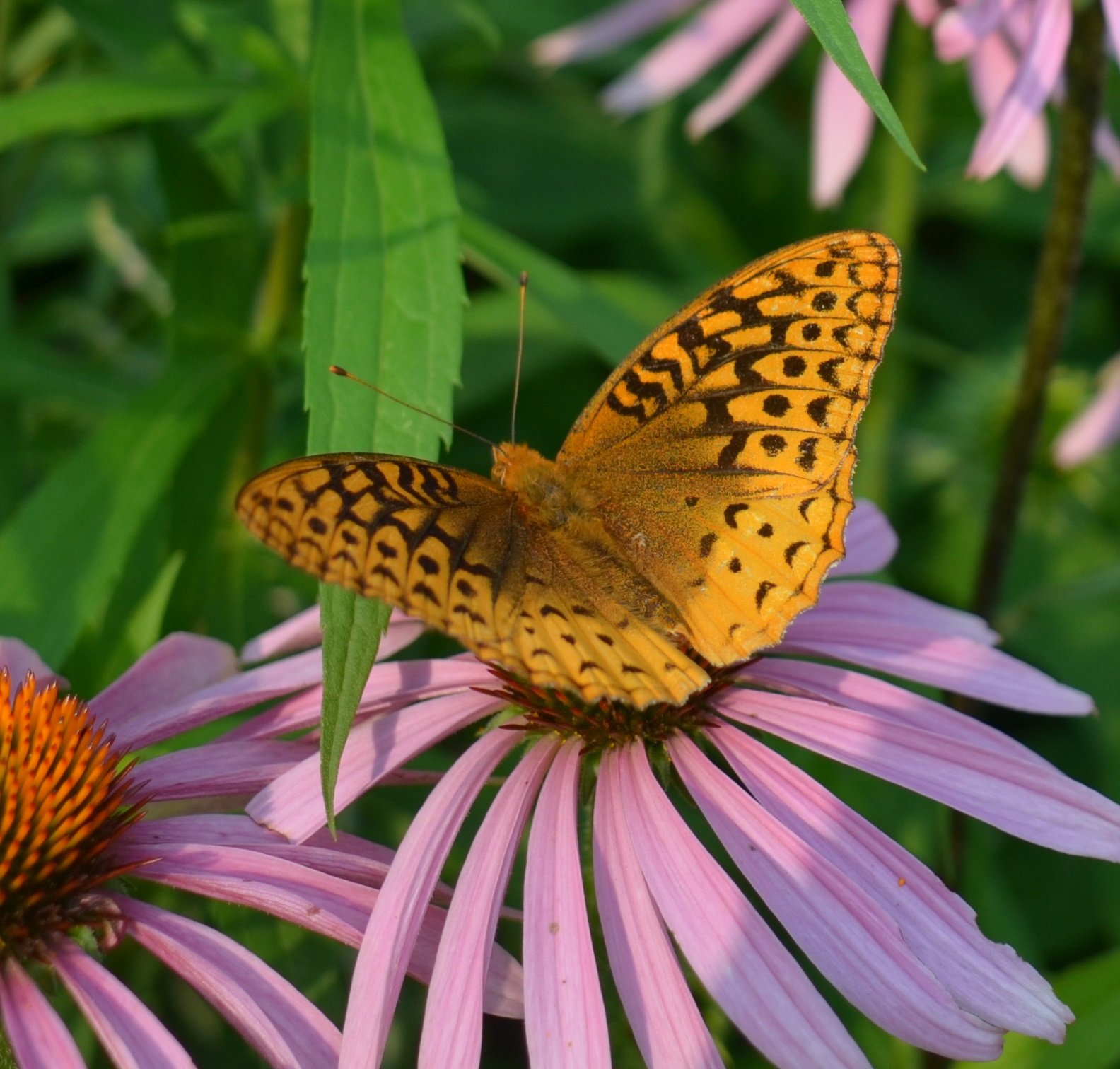
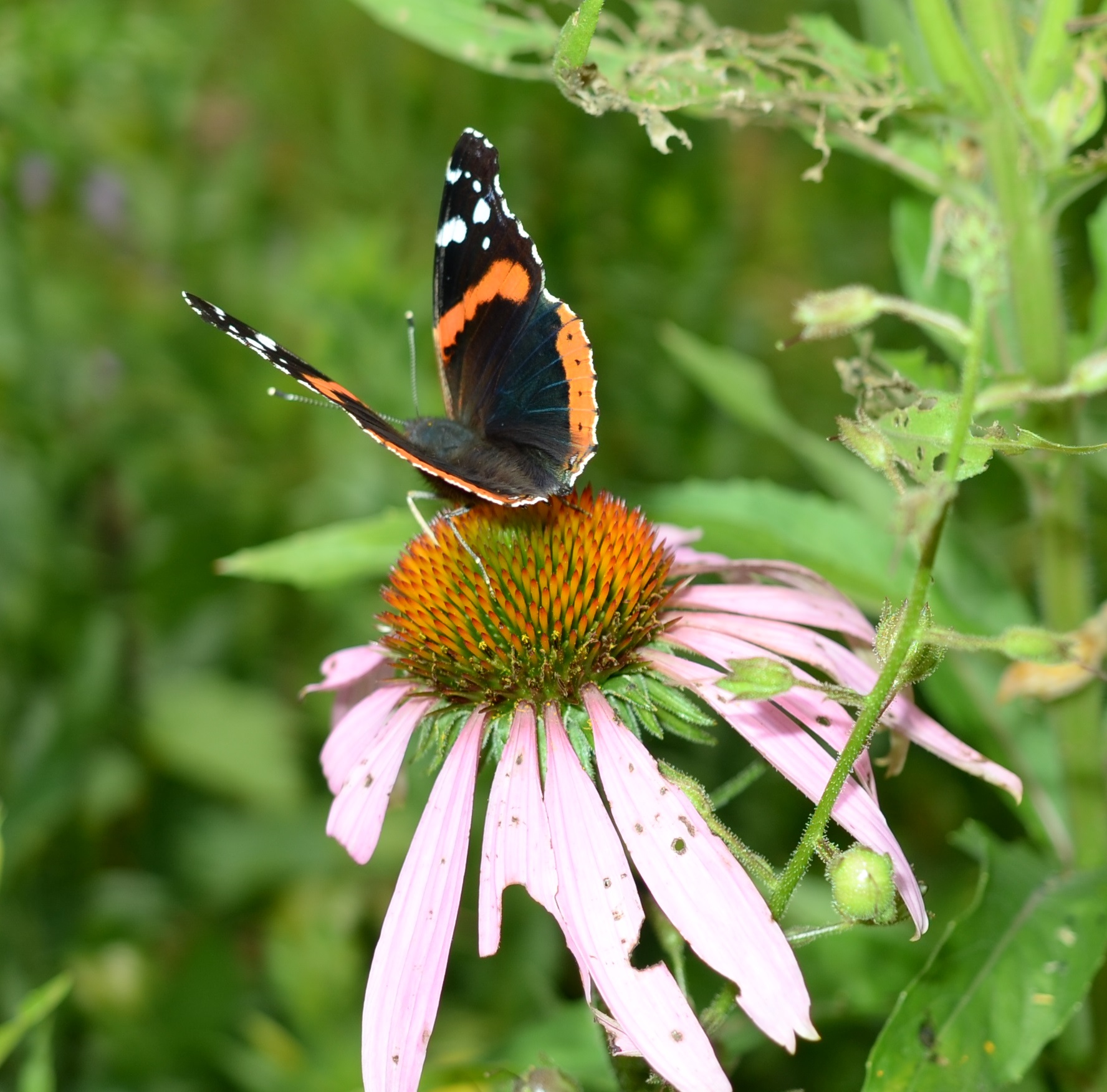
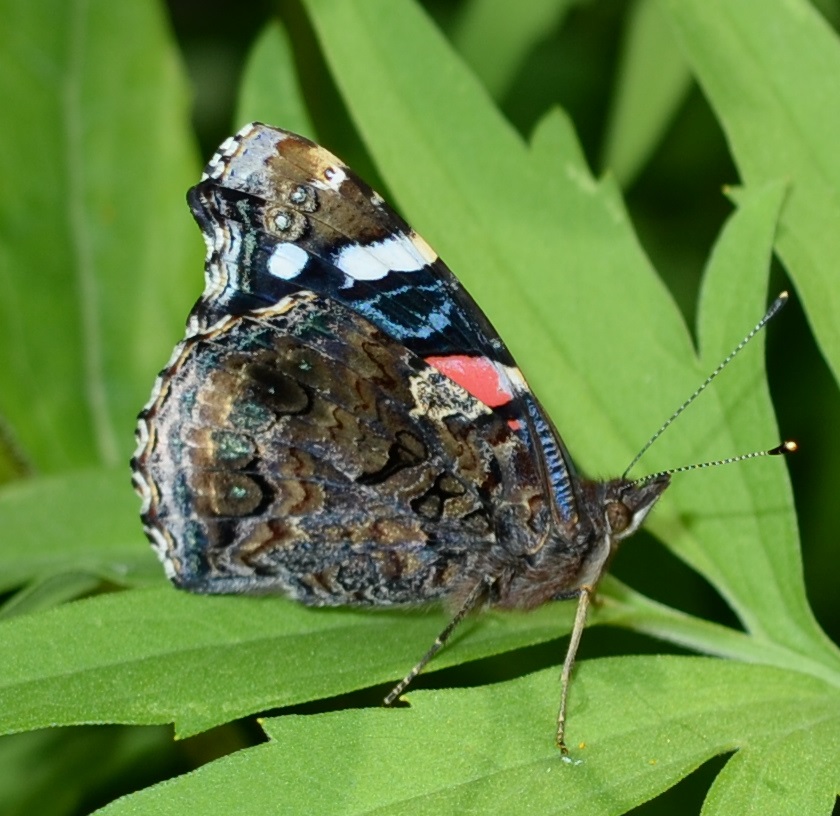
This first butterfly was on the opposite side of the garden from me, hence the fuzziness. The question mark flies very quickly when it sees anyone approaching, but its
size (2.5 to 3 inches wingspan - estimated)and the purple edges to its wings assure one that it is in fact the question mark and not a comma. These two
butterflies I mention have on their closed wings a "question mark " or "comma" shaped marking. But the question mark is about an inch bigger than the comma.Sorry about the fuzziness - I have a macro lens but not a zoom one.
The next fellow is another banded hairstreak, this time on a goldenrod (also on college property), which is blooming very early at that location. And the next one is the caterpillar of the Monarch Butterfly. On the next row you'll see what happens to it when it has gone through its life cycle.

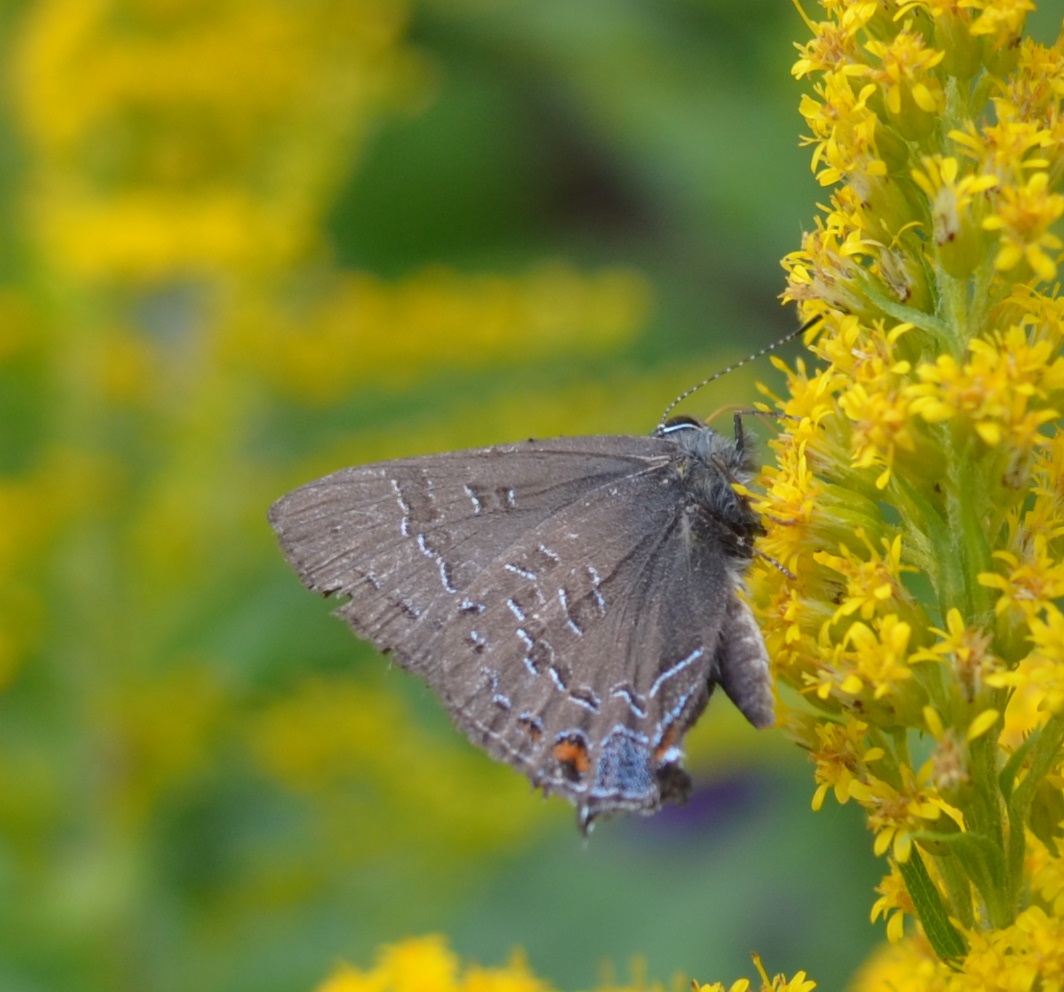
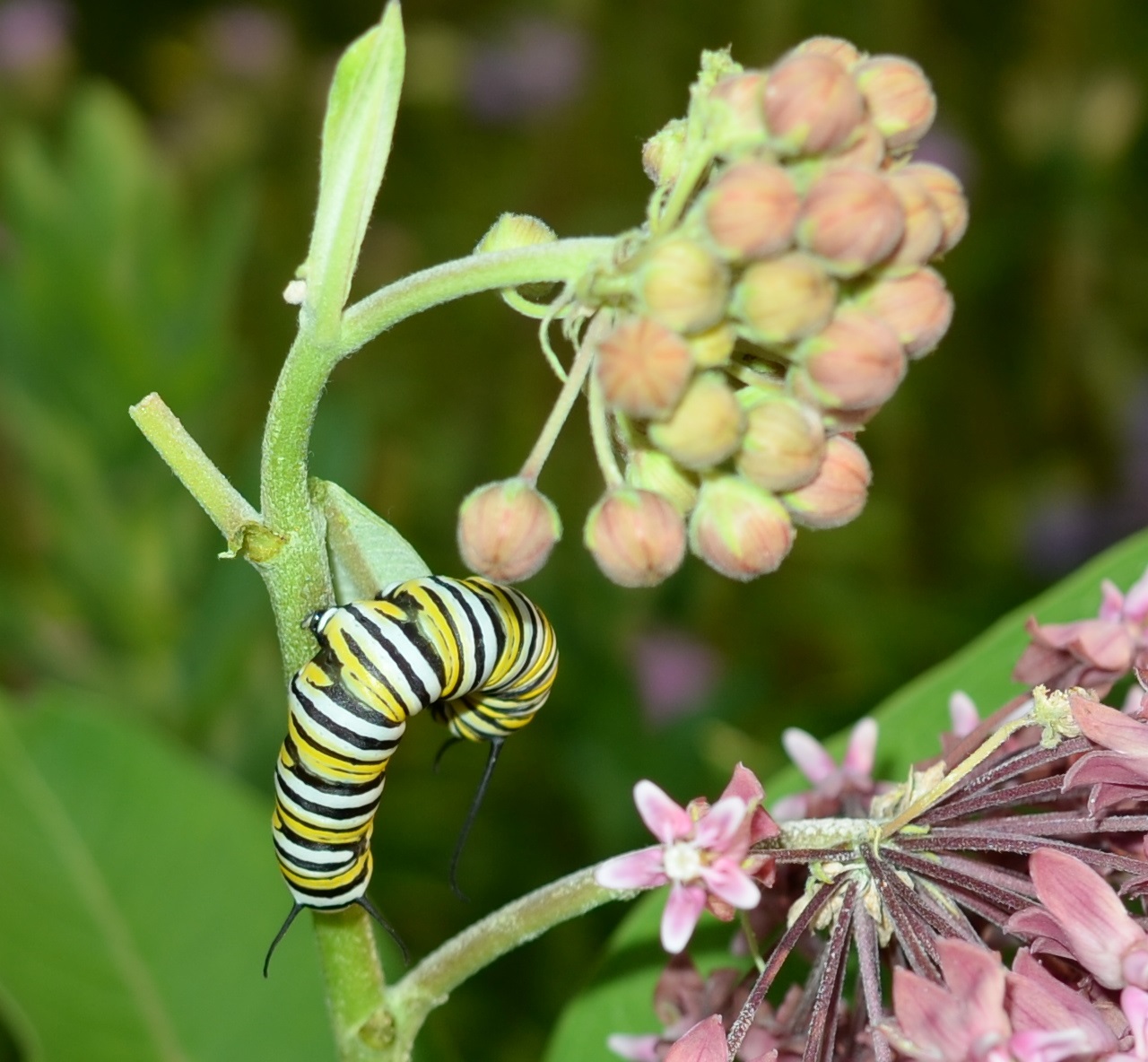
This morning when I went downstairs to look at a bunch of Monarch chrysalids I saw that two had emerged overnight.
This first picture is of a very ripe chrysalis - black and see-through. Until it is "ripe" the chrysalis is bright green and you really can't see
much of the developing butterfly. But in this picture you can see the outline of the Monarch to be. The next picture is of the beautiful just-emerged butterfly. (It has already been open long enough for its wings to have expanded and be ready to fly. I released the two butterflies within a few minutes.) If you have noticed that both of these butterflies have distinctive oval-like spots on their lower wings, that means that they are both males. The females never have such spots.



No new dragonflies this week. In fact, i saw only one new damselfly. Do you remember when we were looking at the Fragile Forktail and lamenting that only the male was represented? Here's a reminder of what he looked like. This week I spotted this one, which had the tell-tale exclamation point on its thorax, but where the male had green this one had blue. So I'm as sure as I can be that this is the female.
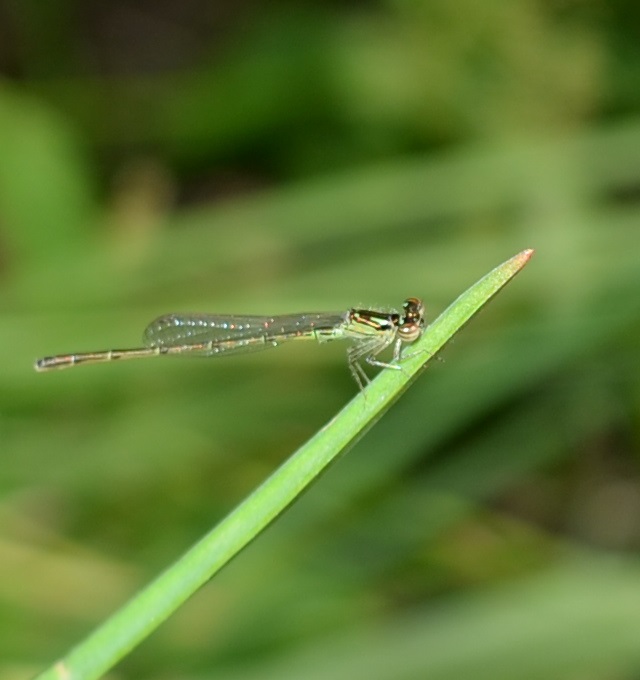
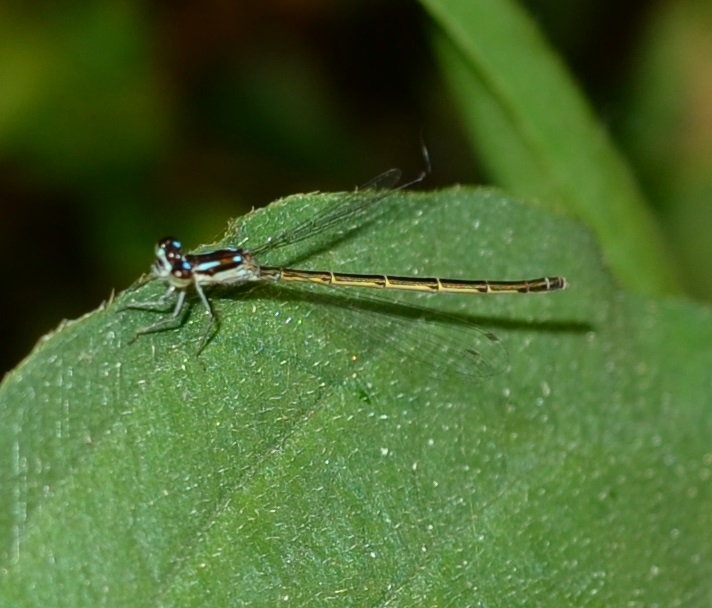
Since I made a few trips to the campus prairie garden, let's look at some of the new creatures we saw there - the milkweed flowers were really
attractants for several things, many with that lovely black and orange/red pattern. The milkweed beetles are still fond of mating with each other. We've seen the milkweed bug before, but didn't know that that was the small milkweed bug. It turns out that there is another called the large milkweed bug. This one is strangely yellow and black, but I have learned that after a while it will turn orange and black like the other milkweed afficianados.

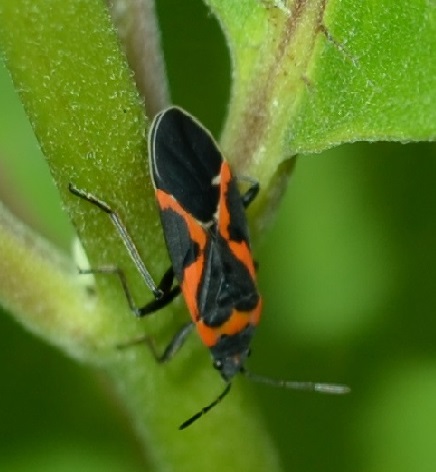
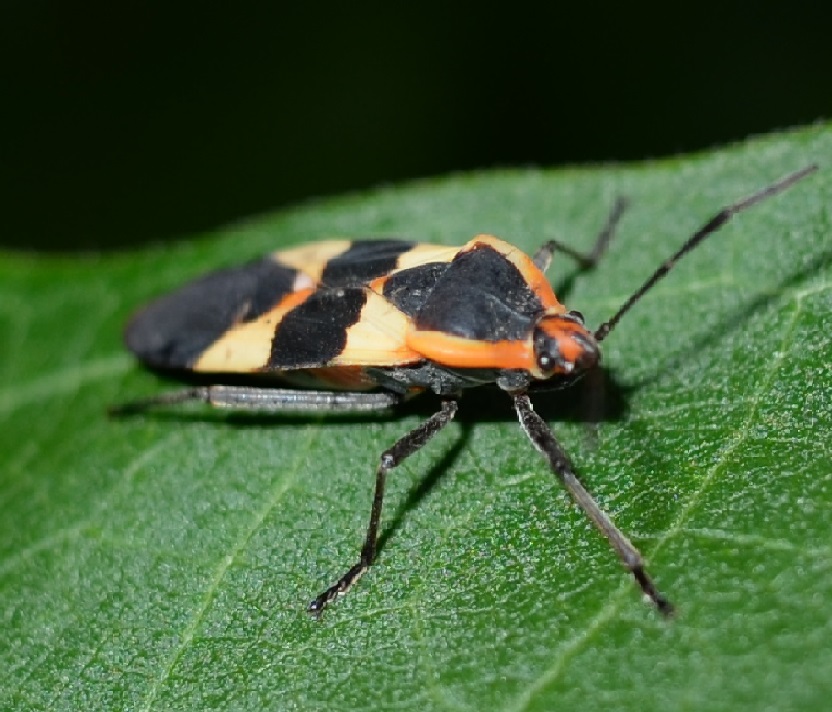
Here we have a couple of new milkweed lovers. This first one surprised me as I thought it was some variant of the milkweed beetle. But after taking this picture showing that it has clear see-through wings, I decided it must be some kind of moth. It is: it's the squash vine borer, meaning that its larvae bore into squash vines. If you gardeners find one on any of your cucurbits (squash family), let me know. The next picture is of a new wasp = the Great Golden Digger. I don't exactly know what it is supposed to dig. And of course the Monarch loves to lay her eggs on the milkweed, which contains toxins, emetics to be exact. So the larvae eat the milkweed and survive but the adult will be distastful. This means that if a bird tries to eat one it will vomit and never try anything with that color combination again. I suppose this makes the other creatures safer too. I don't think the ladybird beetle larvae feed on milkweed but they have the right colors. Here is one munching on some small prey.
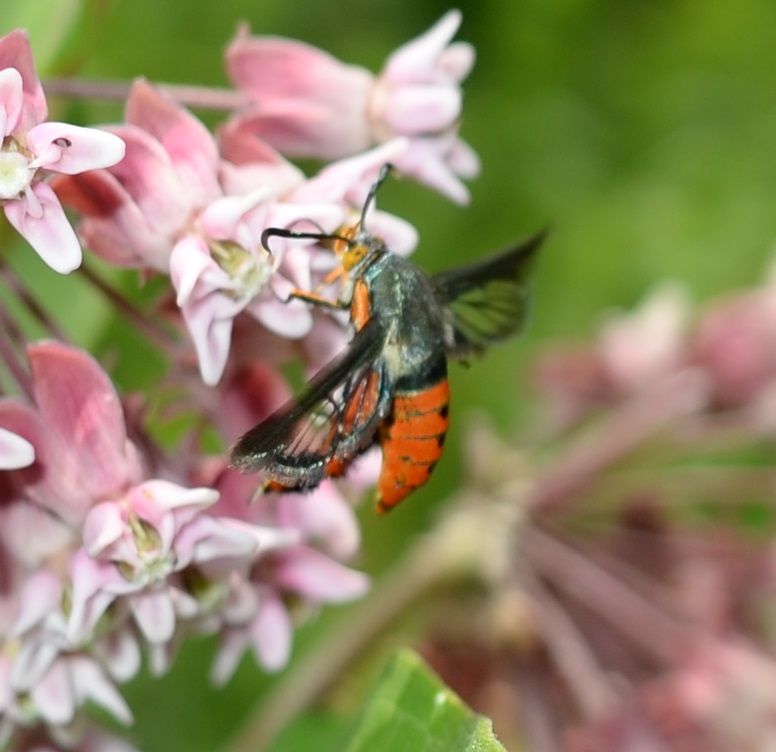 ;
;
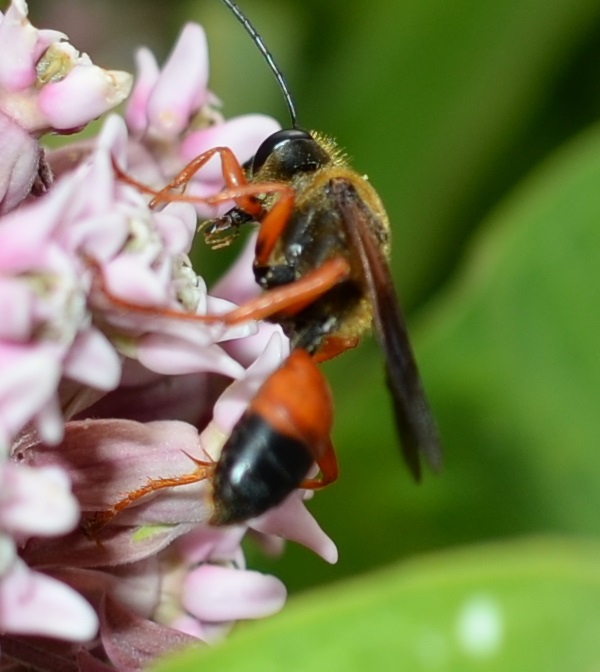 ;
;
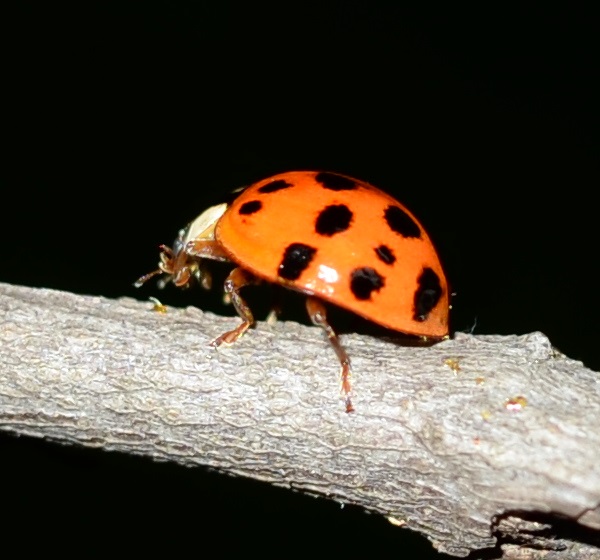
The flies were famous for their family tree branch - the robber flies. These first two are pictures of a new one (to me) which was on the prairie milkweed this week. The third one was of a small (about an inch long) robber fly which was lying dead on the porch stairs. I still can't tell if the things coming out of its rear end are genitalia or parasites. If they are parasites, they seem to be dead. I observed the specimen for a few days and saw no changes there.
;
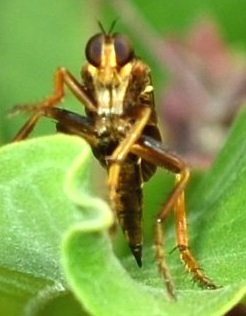
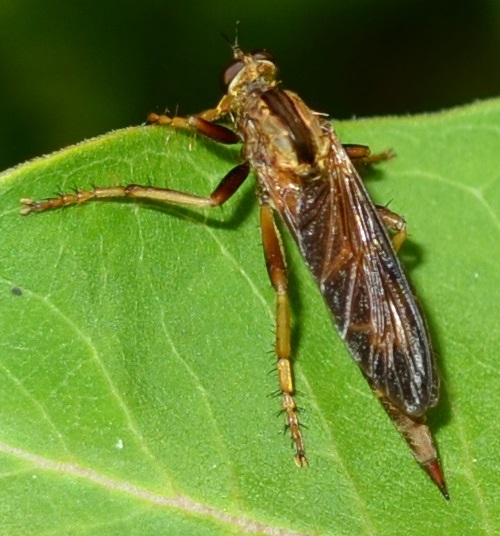
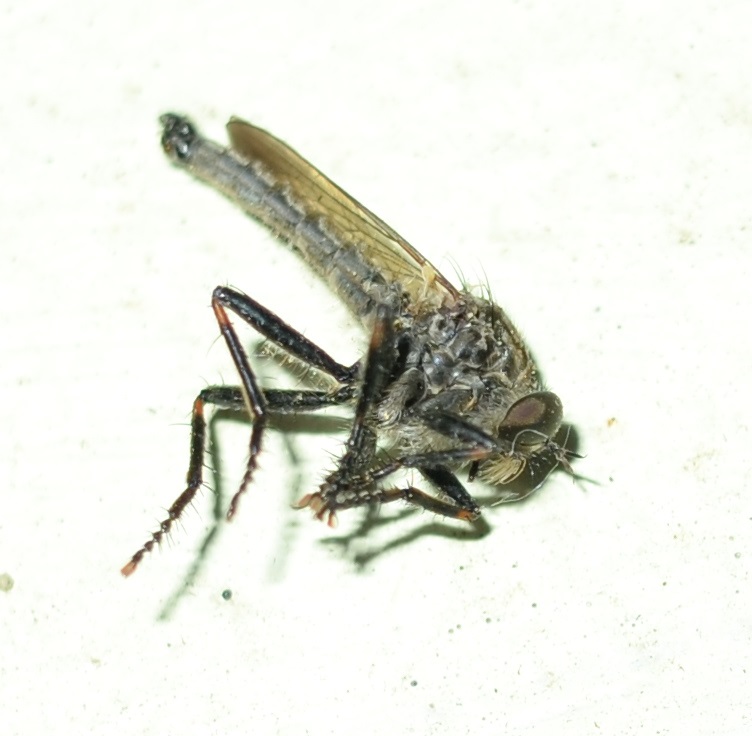
Some more bits about the hymenoptera. This little resting bee is either a mason bee or leaf-cutter bee. They both have hairs under their abdomens that acts like the leg-hairs of most bees in the sense of acting as a pollen collector. The next one is a potter wasp, called that because they make nests of mud which resemble little round pots. Here is a picture I took a couple of weeks ago. I didn't know if it was a spider's egg case or the nest of a wasp, but I've now decided it is the latter.
;

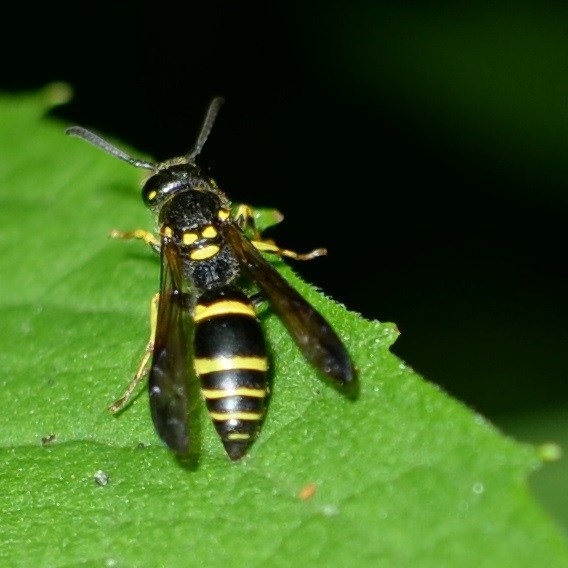

Speaking of mud and wasps, I've since last week found out that that mud dauber I keep mentioning is but one kind of mud dauber. This week I
found a dead one and was struck by the length of its waist. No wonder it's called a thread-waist wasp. Its actual name is "yellow and black mud dauber" because of its yellow legs and a couple of other markings. In fact the female has even more yellow on it, so this one is probably a male. The next one probably is the Great Black Wasp. Those are the only wasps I snapped this week besides the great golden digger that we saw before.
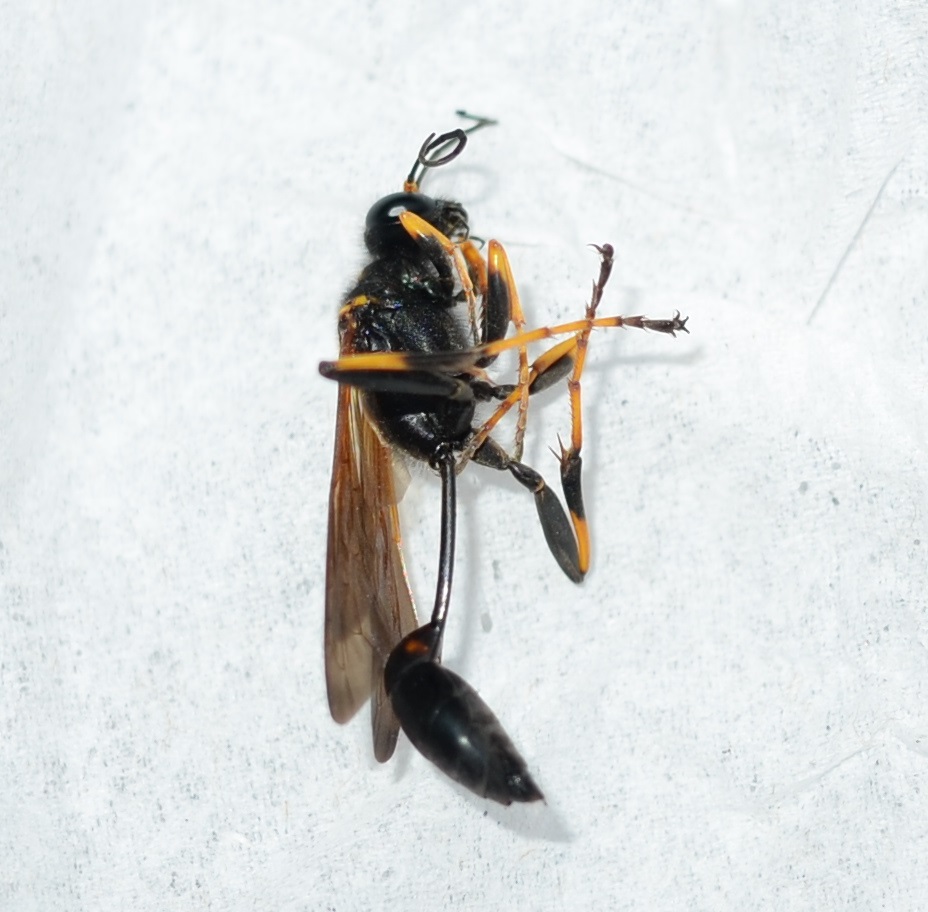
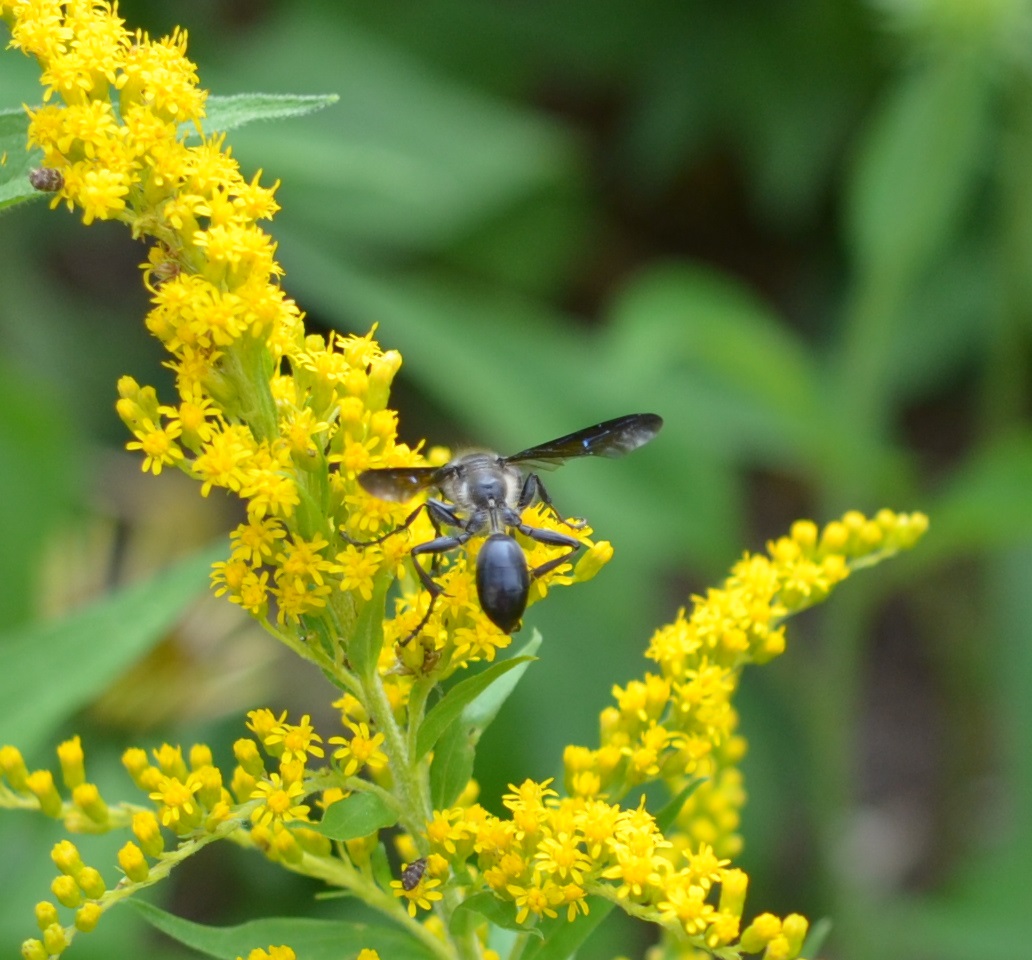
New spiders were few this week. This common house spider has caught a huge earwig. Look at the face on this pirate spider. There certainly seem to be a large number of variations on these pirates.

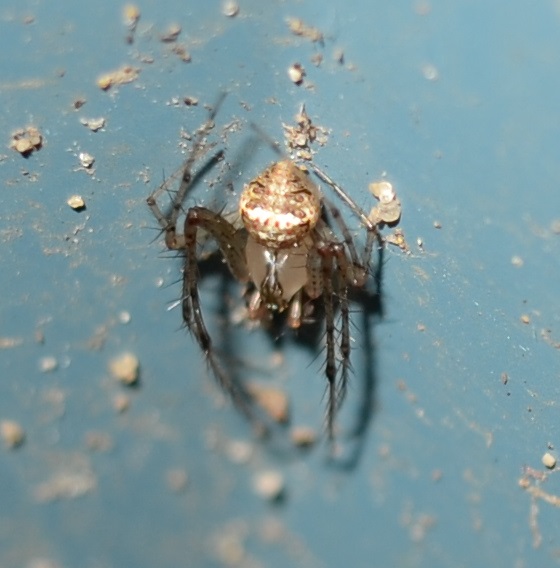
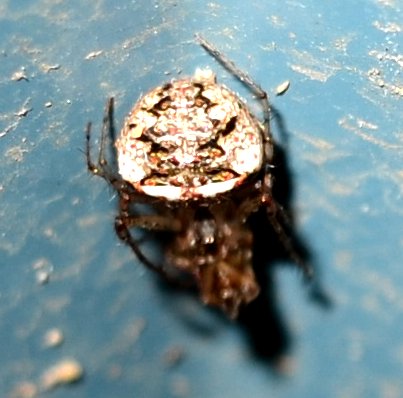
Finally, the beautiful Leucauge venusta orb weaver, the greenest one I've ever seen, and a crab spider with lovely purple markings. Below the little crab is a long-legged other one, can't say because I can't see the body.
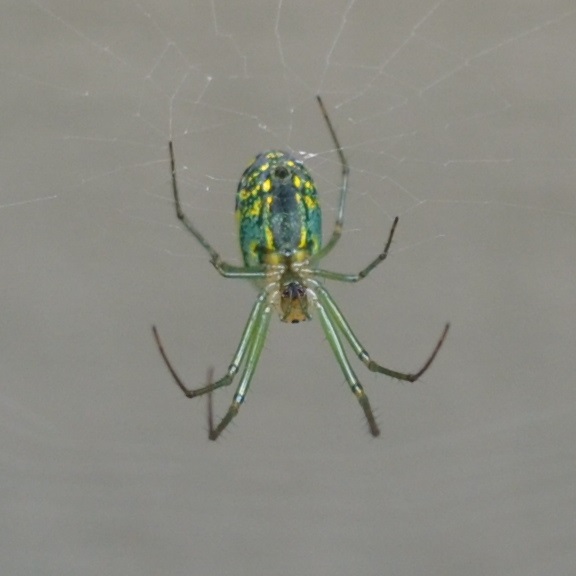
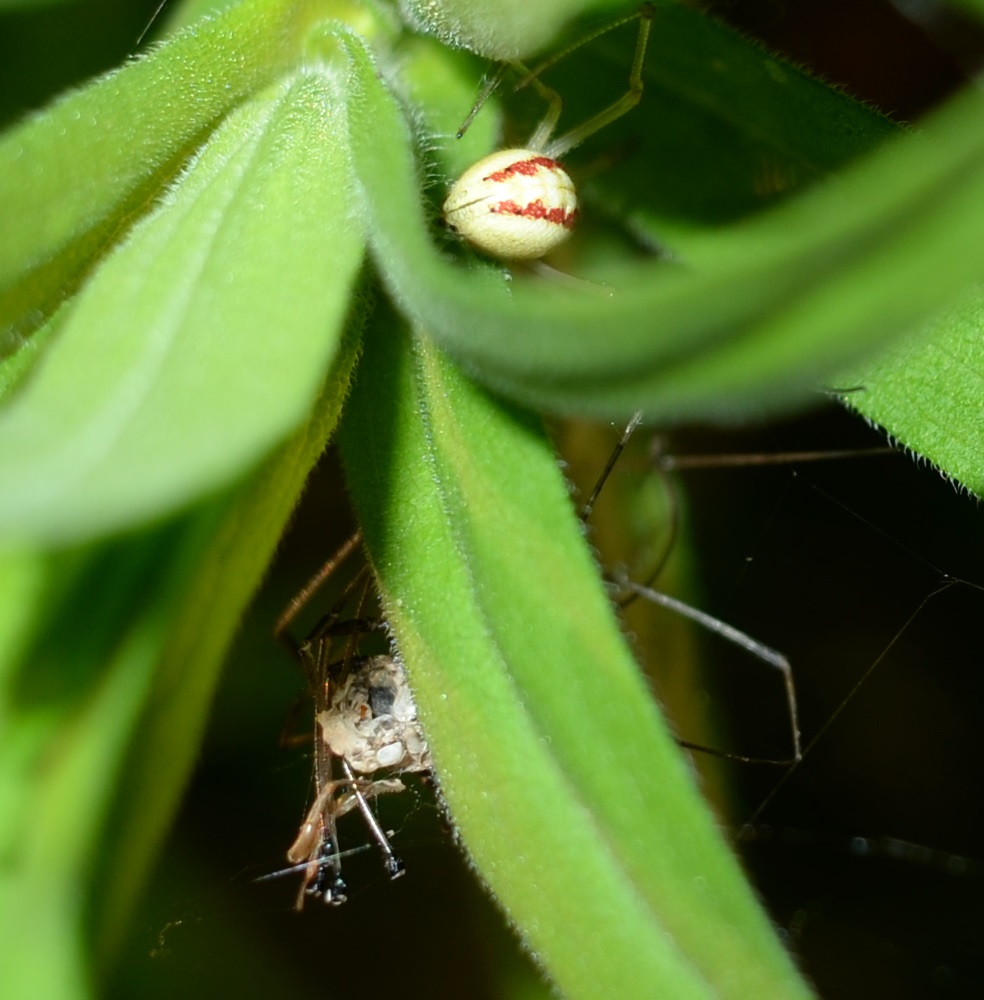
If this seems like a short blog today, remember that I have been having to change into my bug-sprayed clothes before I go out and so have been out less. I've never seen so many mosquitoes! They are so small but so venomous. Well, it might as well be venom, though it's probably allergies, but the huge welts they caused last week are still itchy this week. Last year I hardly got any bites and none of them were spectacular. But to end on a good note, we have had a great deal of rain and that is good. I picked about eight quarts of large sweet raspberries, more really because I ate so many. But there are some eight quarts sitting in the freezer. And that's a good thing. If you come to visit, I'll make you a pie!
Back to July 5
On to July 19
Back to 2015 menu
Back to main menu
copyright Martha O'Kennon 2015























 ;
;
 ;
;













